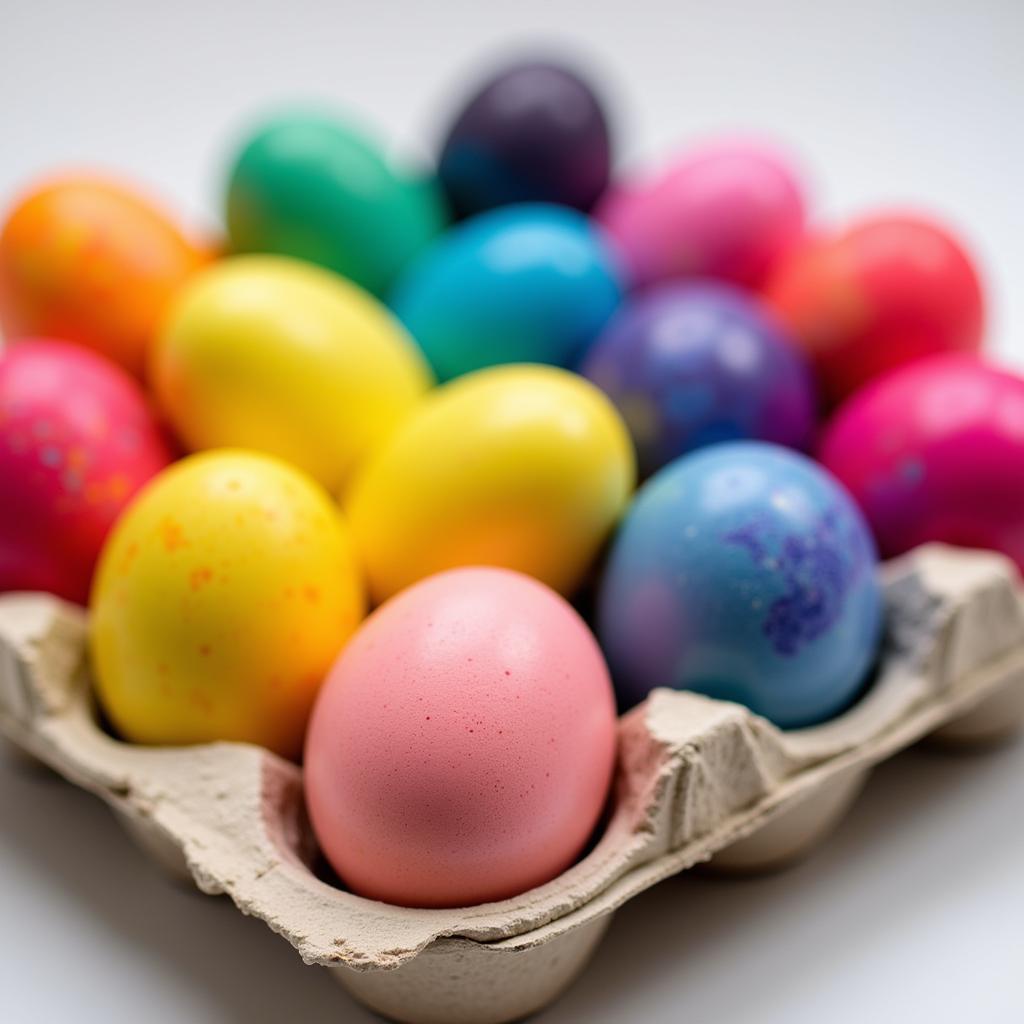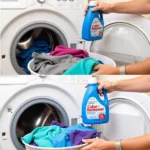Rice vinegar is a pantry staple for many, but can you use it to color eggs? While rice vinegar itself doesn’t impart color, it plays a crucial role in the egg dyeing process. Its acidic nature helps the dye adhere to the eggshell, resulting in more vibrant and even colors. This article will explore the science behind using vinegar for coloring eggs and provide you with tips for achieving stunning results.
The Science of Vinegar in Egg Dyeing
Why is vinegar so important when dyeing eggs? It’s all about the eggshell’s composition. Eggshells are primarily made of calcium carbonate, a slightly alkaline substance. When you introduce an acid, like vinegar, a chemical reaction occurs. This reaction slightly etches the surface of the eggshell, creating a more porous texture. This increased porosity allows the dye to penetrate more deeply and bind more effectively, leading to richer, longer-lasting color. Think of it as prepping the canvas before painting – the vinegar creates a better surface for the dye to cling to.
How to Use Rice Vinegar for Coloring Eggs
Using rice vinegar for coloring eggs is straightforward. First, hard-boil your eggs. While they’re still warm, gently add them to your chosen dye bath, which should already contain the rice vinegar. The standard ratio is approximately one tablespoon of rice vinegar per cup of dye. You can experiment with different concentrations, but be careful not to use too much, as excessive acidity can weaken the eggshell. For more vibrant colors, let the eggs soak in the dye bath for a longer time, checking periodically until the desired shade is achieved.
Exploring Different Dye Options with Rice Vinegar
Rice vinegar works well with a variety of dyes, both natural and artificial. Natural dyes derived from fruits, vegetables, and spices can create beautiful, earthy tones. For instance, red onion skins yield a lovely lavender hue, while turmeric produces a vibrant yellow. When using natural dyes, the vinegar’s role becomes even more critical in extracting and setting the color. Artificial food coloring, readily available in most supermarkets, provides a wider spectrum of bright and bold colors. Again, the addition of rice vinegar ensures these colors adhere evenly and intensely to the eggshell. If you are curious about other ways to dye your eggs, check out can you use food coloring to die eggs.
Tips for Achieving Vibrant Egg Colors
Here are some additional tips to ensure your egg dyeing project is a success:
- Warm water: Use warm water for your dye bath to help the dye penetrate the eggshell.
- White eggs: White eggs provide the best base for vibrant colors.
- Drying: Allow the dyed eggs to dry completely before handling or decorating.
- Experiment: Don’t be afraid to experiment with different dye combinations and soaking times.
 Perfectly Dyed Easter Eggs with Vinegar
Perfectly Dyed Easter Eggs with Vinegar
Can You Use Other Types of Vinegar?
Yes, you can use other types of vinegar like white vinegar or apple cider vinegar. However, white vinegar is generally preferred as it doesn’t impart any color of its own, unlike apple cider vinegar, which might slightly tint the eggs. You can also explore alternative methods without a traditional kit, as discussed in how to color eggs without a kit. Similarly, if you’re interested in coloring rice, you can learn more with how to cook colored rice.
Conclusion
While rice vinegar alone doesn’t color eggs, its acidity is essential for achieving vibrant and long-lasting results. By creating a more receptive surface on the eggshell, rice vinegar allows the dye to penetrate deeper and bind more effectively. So, the next time you’re dyeing eggs, don’t forget this key ingredient for a colorful and successful project. And if you happen to get some dye on your hands, don’t worry, you can find helpful tips on how do you get food coloring off of your hands.
FAQ
- Can I use rice wine vinegar instead of rice vinegar? Yes, rice wine vinegar is a suitable substitute.
- How much rice vinegar should I use per cup of dye? Approximately one tablespoon per cup is recommended.
- Can I reuse the dye bath? It’s generally not recommended as the dye will be diluted and less effective.
- How long should I soak the eggs in the dye? Experiment to achieve your desired color intensity.
- What if I don’t have any vinegar? Lemon juice can be used as a substitute, though it might slightly lighten the final color.
- Can I dye brown eggs with rice vinegar? Yes, you can dye brown eggs, but the colors will appear darker and less vibrant than on white eggs.
- How do I prevent the eggs from cracking during the dyeing process? Adding salt to the boiling water can help prevent cracking.
Need more support? Contact us at 0373298888 or email [email protected]. Visit us at 86 Cầu Giấy, Hà Nội. Our customer service team is available 24/7.

